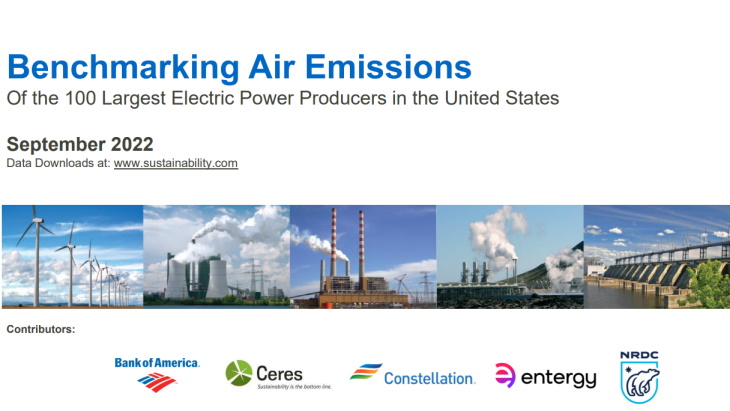Benchmarking study sees uptick in US emissions
08 September 2022
CO2 emissions from the USA's largest 100 power producers increased by 7% between 2020 and 2021, according to the latest benchmarking study in a series that began in 1997. 2021's CO2 levels nonetheless remained 16% lower than 1990 levels and about 34% lower than their peak in 2007.

The 2021 increase - as world economies restarted following the shutdowns of the COVID pandemic - disrupted a steady downward trend for all power sector air emissions, and highlights the need for US power providers to take advantage of the clean energy incentives in the recently passed Inflation Reduction Act, and rapidly transition to cleaner resources, its authors said.
Benchmarking Air Emissions of the 100 Largest Electric Power Producers in the United States is a collaborative effort between non-profit organisation Ceres, Bank of America Charitable Foundation; power producers Constellation Energy and Entergy, and the Natural Resources Defense Council. It is authored by global sustainability consultancy ERM. The series uses publicly reported data to compare the emissions performance of the USA's 100 largest power producers, and includes data on sulphur dioxide, nitrogen oxides and mercury emissions as well as CO2.
The increase in carbon dioxide emissions was driven by a rise in coal generation and decrease in natural gas generation, at a time when natural gas prices in the USA were increasing, the report shows.
According to the study, nuclear plants accounted for 19% of total US generation and achieved capacity factors well over 90%, far higher than any of the other fuels or technologies. (Capacity factors are a measure of how much a power plant is used over time). Despite the year-on-year decline, natural gas was the leading source of electricity generation in the USA in 2021, at 38%), followed by coal (22%).
"While the power sector has shown marked improvement over our two decades of analysis, we need to see an acceleration of larger emissions cuts across the industry in order to reach our 2030 emissions reduction goals," said Dan Bakal, senior program director of climate and energy at Ceres. "It's important to recognise how far we have come, but impossible to ignore how far we still have to go. While many of the largest power producers have announced climate commitments and strategies to reduce their carbon emissions, the rapid srequired will demand increased ambition."
Researched and written by World Nuclear News
No comments:
Post a Comment